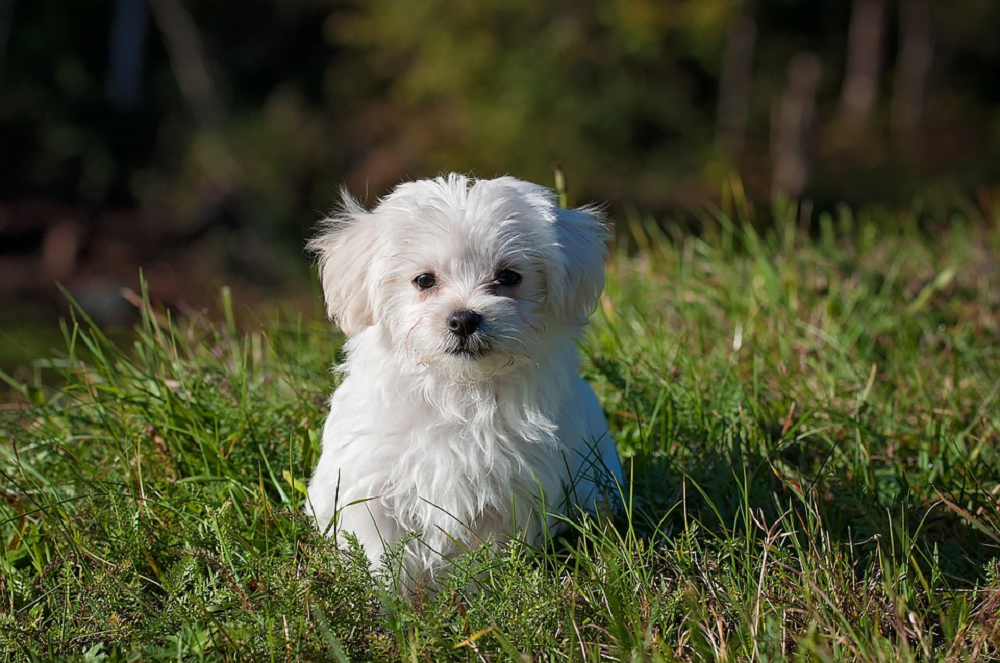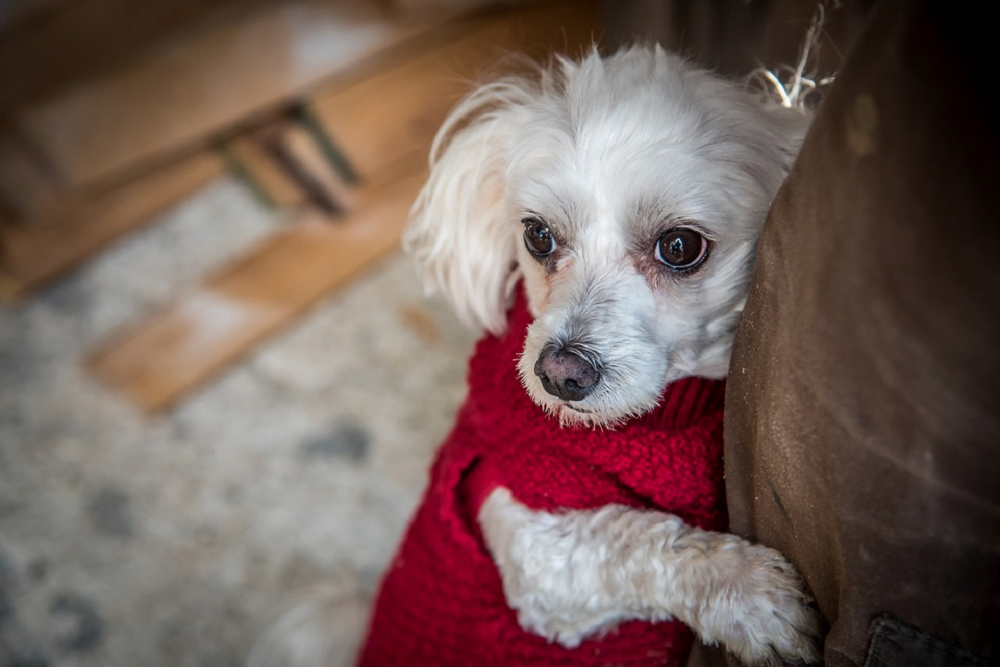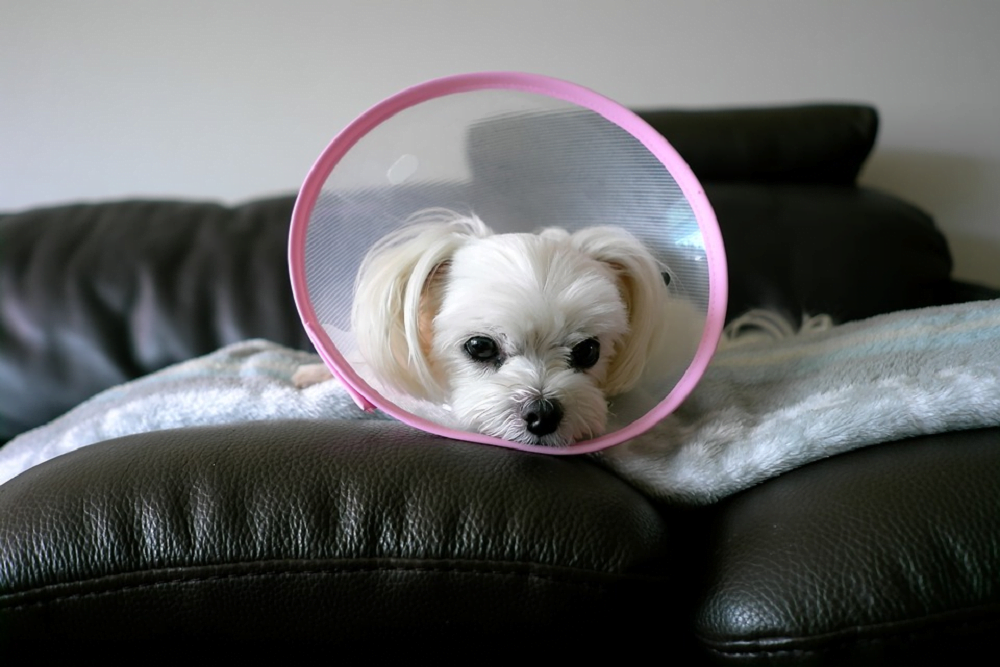The Maltese dog breed is a breed with an interesting and lengthy history, and there is lots to learn about them before you decide to bring one into your home. It is really important to do your research, so you can know exactly what to expect.
These dogs can live for a very long time so you should be prepared to Lots of time and energy into owning this breed. They can be very active at times and will require daily walking, but this is only part of their everyday needs.

In order to help you find out everything there is to know about the Maltese breed we are going to provide you with a lengthy and detailed guide that is full of all of the information that you could possibly need to know. Hopefully, this will prepare you for what to expect when owning a Maltese.
History
The Maltese dog breed is one of the most ancient of all the toy breeds, and it has a history that can be traced back at least two millennia. The breed has been featured in many artists, poets, and writers work, especially in the early great cultures of Greece, Rome, and Egypt. The Maltese breed has even been mentioned by Aristotle.
The Greeks actually erected Tombs for their Maltese dogs, and representations of Maltese like dogs on Egyptian artefacts suggests that they were surprised by that ancient culture.
The Egyptians thought that the Maltese was able to cure people of disease and they would be placed on the pillow of an ill person due to this. This is one of the reasons why they were often called the comforter comma and even before the Christian era the breed was widespread in Mediterranean cultures.
Although this breed of dog was so common in history, the exact origin of the Maltese dog breed is not currently known. However by the 15th century this breed found a place among French aristocrats and during the reign of Henry VIII, the Maltese arrived in the British Isles. By the end of the 16th century the Maltese had grown to become a favourite pet for Noble and royal ladies.
Maltese breed also managed to survive the fall of the Roman empire and the Dark Ages, although they were nearly destroyed in the 17th and 18th centuries when an attempt was made to breed them to become the size of a squirrel.
Following on from this disastrous experiment, they were bred with poodles, miniature spaniels, and East Asian miniature dogs to save it. This meant that the Maltese became so varied that many new breeds were formed.
Average Lifespan
The Maltese dog breed will typically live between 12 and 15 years of age. The average lifespan for the dog breed is around 13 years old, but there have been some Maltese dogs that have lived for up to 17 years of age.
Minimum Exercise (per day)
Small dogs like the Maltese need exercise just like larger dogs do, more specifically, between 20 and 30 minutes of exercise per day. As well as this, toy breeds like the Maltese that have higher energy levels can even need more exercise than this.
Some of the main reasons why regular exercise is beneficial are:
- It is great for the heart, blood circulation, and for boosting the immune system
- Helps keep bones strong
- Maintains proper muscle mass
- Helps to regulate metabolism
- Encourages more robust eating
There are also some changes in behaviour that come from regular daily exercise for the Maltese comma including the fact that it can satisfy their canine instincts of needing to smell new smells and hear new noises. It can also help to prevent the canine equivalent of cabin fever as being in an outside environment can help to lift the spirits of a dog that has been inside for too long.
In addition to this, it allows for the dog to to release any of the extra energy that has not yet been expelled. If a puppy or dog does not have a way to do this, it can negatively manifest in other ways including destructive behaviour, excessive barking, jumping, restless behaviour, and a sullen mood.
Coat Length
The length of a Maltese dog coat can vary from 1/3 of an inch to several inches long.
Minimum Cost (per month)
You can expect to pay around $100 per month on maintaining, feeding, and caring for your Maltese dog.
Appearance
These dogs are in the toy breed category and they typically weigh under 7 pounds, with 4 to 6 pounds often being the most ideal weight. Traditionally, they will have a flowing and pure white coat but many people have started to cut back their coats to make them shorter, which means that it is easier to maintain.
When their fur is left long it usually falls down the side of their body, reaching the floor. Some pet owners will choose to style their fur due to the fact that it is so long, but others avoid doing so.
The formal breed standards would suggest that the coach should be sleeping texture and that any curliness or kinks are objectionable. One of the things that draws many people to this breed is the fact that they do not shed a lot, which means that they do not leave much fur around the house.
You might also be curious to learn that the eyes and nose of a Maltese dog are typically dark and sometimes even black in colour. They have round her shaped heads then lots of other breeds with a medium length muzzle, and they also have low set ears that are feathered with hair.
Size
Maltese are classified as a small dog breed, and they are the perfect size for someone that is looking for a smaller dog.
Average Height
Average height for a male Maltese dog is between 21 and 25 cm. The average height for a female Maltese dog is between 21 and 23 cm.
Average Weight
The average weight for both male and female Maltese dogs is between 3 and 4 pounds.
Temperament

Maltese dogs are usually really friendly and they are also highly intelligent. They are known to be trusting of other people even when they are puppies, and their trusting and social nature can be applied with more than just people.
They are often friendly with other dogs and pets and this feature makes the breed a great choice for families with other pets. The Maltese is generally a curious, energetic, and playful dog breed.
Due to the High intelligence and trust in nature they are really easy to bond with and even easier to train. They respond really well to positive reinforcement and you can get your Maltese to learn lots of different tricks at hardly any time. However, you will need to provide them with lots of praise and love.
Maltese dogs thrive on human interaction and they crave attention. They can also get really lonely and anxious if they are not getting enough interaction with their owners.
This breed of dog likes to be cuddled and held, and their small size makes them great for this. These traits also make the Maltese a great therapy dog for those that need emotional support. They are also loyal and keen to danger, making them reliable watch dogs.
Apartment Living
Maltese dogs are suitable for living even in apartments and small confines. This breed can be difficult to train, which may be difficult initially, but it should improve over time. Maltese dogs are also light shedders, which makes them great pets for those that suffer from allergies.
Good for Novice Owners
Due to the fact that Maltese dogs are small and they are not known for having lots of energy, they can make the perfect fit for different types of dog owners. They are not typically a challenging breed, and they can make a great addition to homes with families but have not previously owned dogs, but I’m not highly active, and those with little experience.
Sensitivity Level
Maltese dogs have been known to be quite sensitive at times, but it all depends on what mood they are in. If they are feeling down, they will definitely tell you about it and they tend to crave human interaction more at these times.
Tolerates Being Alone
Unfortunately, Maltese dogs need a lot of companionship as they do not like being left alone for more than a few hours. Being left in their own company for a long time can leave them to experience feelings of anxiety and unhappiness, which they may display through destructive behaviour and vocalisation.
Tolerating Hot and Cold Weather
Malteser definitely house dogs and they don’t tolerate extreme heat or cold well. Many people would choose to paper train them, so they do not have to take them outside when the weather is too hot or too cold. You should never leave your dog outdoors when the weather is really hot or cold, as they can easily become uncomfortable.
Affectionate With Family
The Maltese dog breed is known for being gentle, affectionate, intelligent, responsive, and trusting. All these traits make them perfect for homes with families, and you can be sure that your dog will show you affection in many different ways.
Kid-Friendly
Maltese are not the best dogs to own if you have young children as they are very fragile. It is possible for a clumsy child to accidentally enjoy your dog either by stepping on them, squeezing them, or dropping them after picking them up.
In addition to this, many Maltese are often overwhelmed by quick movements and high pitched voices, which can lead to stress and avoidance. This can lead to defensive behavior. So, even though Maltese dogs do love children, they might not make the most ideal pet if you have young children in your home. It is also important to supervise any dog around a young child.
Dog Friendly
The most part, Maltese are really friendly dogs that get along with most other dogs. However, sometimes they just like to keep to themselves and might not be in the mood for the company of all the docks. Proper socialization and training can play an important role in how your dog responds around other dogs. If they are properly socialized from a young age, they are more likely to get on with other dogs.
Friendly Toward Strangers
Due to the fact that Maltese dogs are very trusting and friendly, it is highly likely that they will be good with strangers. They are very people-centered, which means that day will be more likely to be accepting of strangers in your home or when you are out on a walk.
Health And Grooming
As with any other dog, there are certain things that you will need to know about their health and their required grooming routines. We are going to explain everything that you need to know below.
Shedding
Maltese dogs do not shed a lot, which makes them great pets for families with allergies to dog fur. However, they will still need to be brushed on a regular basis to avoid any matting in their fur.
Drooling
Maltese dogs are among certain dog breeds that are not likely to drool, so if this is something you are trying to avoid, this could be the perfect dog for you. In fact, if you find that your Maltese is drooling, especially excessively, this could be an indication that something is wrong.
Grooming
Dogs do not require too much grooming and maintenance, but there are some things that you will need to keep on top of. you should get your hands on some facial wipes or I wipes that are friendly to dogs so you can wipe their face between two to three times a day.
You will also need to trim their nails around every 5 to 6-weeks, and clean their ears every 4 weeks. In an ideal situation, their teeth will be brushed once a day. You will also need to brush their fur on a regular basis to avoid a buildup of matts.
General health
Maltese are generally healthy, but like all breeds, they’re prone to certain health conditions. Not all Maltese will get any or all of these diseases, but it’s important to be aware of them if you’re considering this breed.
Common Health Problems
- Patellar luxation – The patella is the kneecap, and luxation means the dislocation of a joint. This means that patellar luxation is when the knee joint slides in and out of place, and causes pain. This is most commonly found in the Hind legs and it can be crippling. However, many dogs with this condition can lead relatively normal lives with treatment.
- Portosystemic liver shunt – This is a renal disorder that can occur when an abnormal vessel causes blood to bypass the Liver. Therefore, it cannot be properly cleansed.
- Progressive Retinal Atrophy (PRA) – this is a degenerative eye disorder comma and blindness that is caused by PRA is a slow process that occurs due to a loss of photoreceptors at the back of the eye. This can be detected years before the dog shows any signs of blindness, and A reputable breeder will have their dog’s eyes certified annually by a veterinary ophthalmologist.
- Hypoglycemia – This is a malady that is caused by low blood sugar and some of the signs of this condition may include weakness, confusion, a wobbly gait, and seizure-like episodes. If your dog is susceptible to this condition, you should talk to your vet about ways to prevent and treat it.
- White Dog Shaker Syndrome – This is a condition that is most likely to affect white dogs, and signs of this condition include tremors over the entire body, lack of coordination, and rapid eye movements. Episodes of this will usually start when the dog is between 6-months and 3 years old and is stressed or overly excited.
This condition is not painful and will not affect your dog’s personality, but if you suspect that your dog has white dog shaker syndrome, you should talk to your vet about potential treatment options.
- Collapsed trachea – Some dogs will be prone to this condition. The trachea, which carries air to the lungs, tends to collapse easily if your dog is suffering from this condition. One of the most common signs of a collapsed trachea is A chronic, dry, harsh cough that many people would describe as similar to the sound of a goose honk.
A collapsed trachea can be treated medically or surgically, but if this is the case for your dog you will need to talk to your vet about potential treatment options.
Reverse sneezing – This is a condition that is often confused with collapsed trachea, but this condition is not as serious and will only last for a few minutes. reverse sneezing primarily occurs when your dog becomes over excited or they try to eat or drink too fast. It can also occur when pollen or other irritants are in the air.
With reverse sneezing, secretions from the dog’s nose drop onto the soft palate, which causes it to close over the windpipe in an automatic reaction. This can be a scary occurrence for your Maltese, but as your dog is able to calm down, the reverse sneezing will stop. You can try to gently stroke their throat to help them relax when this happens.
Potential For Weight Gain
The average weight for a male or female Maltese is 3 to 4 pounds. They do not commonly put on too much weight unless they are not getting enough exercise in proportion with the amount of food that they are being given. Actually, it is more common for them to be underweight, and if this is the case, you should talk to your vet to come up with a plan of action.
Trainability

The Maltese is one of the easiest toy breeds to train, especially when you provide them with lots of praise and treats. They are able to pick up on commands very easily, and they also have a natural desire to please.
Intelligence
The Maltese is not a particularly intelligent dog, and they do have below average intelligence when you compare them to other dog breeds full stop when it comes to obedience and work intelligence, they might not always get it right.
However, the thing that makes Maltese dogs really smart is their intelligence in hunting. As well as this, they have a great ability to learn from both situations and people, so this dog is smarter than you might think.
Potential to Bite
when they are puppies, it is quite common for a maltese to nip when they are teething or playing with the owners. If they are not taught to do otherwise, an adult Maltese will bite when they are feeling nervous, anxious, or threatened. They might also bite when they are threatened or approached by strangers.
Tendency To Bark Or Howl
Maltese do tend to bark quite a lot, which is a trait that they share with most toy-sized dog breeds. They also have a particularly sensitive temperament, which means they are prone to bark uncontrollably, and many different things can trigger such behaviour.
Costs
You can expect to pay anywhere from $600 to $3000 for a Maltese dog. However, you will also need to factor in costs for maintenance, veterinarian costs, grooming costs, lifestyle costs, training costs, food costs, and more.
Fun Facts About Maltese Dogs
- They are often fearless
- They typically don’t shed
- They are powerful jumpers
- They can easily sunburn
- They are great with other dogs
